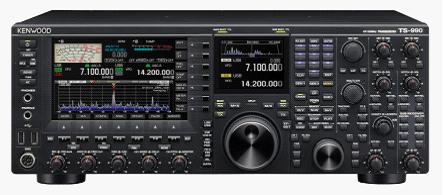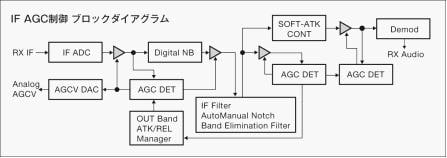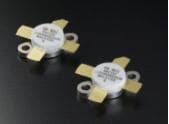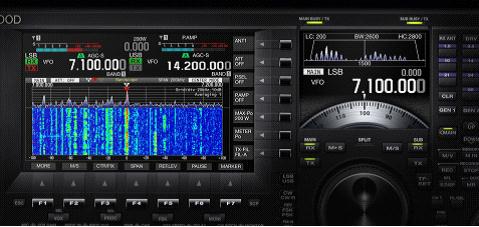TS-990 появится в продаже уже в феврале
| Новинки продукции для радиолюбителей |

Redefining State of the Art
New Top-of-the-range HF/50MHz Transceivers Carry on the Tradition of KENWOOD Flagship Radios
TS-990 Series to be launched next month
JVCKENWOOD Corporation has announced the launch of the new TS-990 Series of HF/50MHz transceivers, the latest KENWOOD competition-class models, in Japan and the rest of the world in late February 2013.
| Product name | Model | Recommended retail price (incl. tax) | Launch |
|---|---|---|---|
| HF/50MHz transceiver (200W) | TS-990S | ¥798,000 | Feb. 2013 |
| HF/50MHz transceiver (50W) | TS-990D | ¥798,000 |
Note: An Amateur Radio license is required to operate these models – Level 2 for the TS-990S, Level 3 for the TS-990D.
The TS-990D is only available in Japan’s domestic market.
-

TS-990S/D
Product background and features
The debut of the TS-900 in 1973 established the magnificent tradition of KENWOOD flagship HF transceivers, designed for DX’ers with exacting requirements for long-range high-performance Amateur Radio communications. Successor series have been the TS-930, TS-940, and TS-950. Continuing this tradition, the new TS-990 is equipped with dual receivers to enable simultaneous reception on two different bands. The main receiver employs full down conversion and features a new mixer and narrow-band roofing filters, resulting in a third-order intercept point of +40dBm; this represents the highest level of RX performance. Also equipped are triple 32-bit floating point DSPs and an original IF AGC circuit featuring leading-edge DSP technology. Advanced KENWOOD technologies deliver the top-end RX performance that DX’ers are looking for in an HF transceiver. Moreover, 50V MOSFETs are used for the final amp, ensuring stable high-output operation with minimal distortion, even at 200W RF output power. All this and more: the world’s first*1 dual TFT display – with a band scope, audio scope, and S meter – offers enhanced visibility and operating ease.
*1 World’s first transceiver with dual TFT display (JVCKENWOOD data, as of January 8, 2013) to be launched in late February 2013.
Reference: The history of KENWOOD flagship transceivers
1973: TS-900 (historic all-band SSB transceiver, featuring cutting-edge technology)
1982: TS-930 (HF transceiver with the world’s first automatic antenna tuner for Amateur Radio use)
1985: TS-940 (high dynamic range HF transceiver which was more than a match for Cycle 22 pileups)
1989: TS-950 (world’s first HF transceiver with DSP, leading the way into the new digital era)
Main Features
●Receiver
1. Down conversion employed for all Amateur Radio bands (main receiver)
The main receiver of the TS-990 employs down conversion for the first IF (8.248MHz) for all Amateur bands. This results in excellent dynamic range when adjacent unwanted signals are present – significantly better than what was possible with the up-conversion approach previously used. Even when the interfering signal is on an adjacent frequency, the TS-990 is able to maintain almost flat dynamic range characteristics, capturing just the target signal.
2. Newly developed mixer contributes to IP3 +40dBm performance (main receiver)
The first mixer circuit, at the heart of the main receiver, is equipped with a new double balanced grounded switch type mixer. In order to prevent distortion when there is a large input signal, the signal route up to the first mixer includes sophisticated circuitry with carefully selected components – such as large-core toroidal coils and relays for signal switching between bands – resulting in a third-order intercept point of +40dBm.
3. New narrow-band high-IP roofing filters help to remove adjacent interference (main receiver)
As well as employing down conversion for reception on all Amateur bands, the TS-990 is equipped with 5 high-IP roofing filters as standard. In addition to 500Hz and 270Hz filters, which provide the sort of narrow passband that is so important for CW (Morse code) operations, there is a 2.7kHz filter for SSB, as well as 6kHz and 15kHz filters suited for AM/FM use. These filters are selected automatically depending on the DSP’s final passband setting. Manual switching is also possible.
4. New VCO division-type first local oscillator divides high frequencies to ensure high C/N
The TS-990’s local oscillator features independent circuits optimized for different signals: VCO division type / DDS direct for the main receiver; DDS direct for the sub receiver; and conventional PLL for the transmitter. The newly developed VCO division-type approach adopted for the first local oscillator of the main receiver involves having the VCO oscillate at a frequency higher than the target frequency, and by dividing this frequency it is possible to generate a local oscillator signal with excellent C/N characteristics, almost as good as produced by a DDS direct circuit, and with low spurious emission equivalent to that of PLL. This reduces noise in the local oscillator and, thanks to the high C/N ratio, the target signal is not allowed to become buried in noise. The pure incoming signal can thus be shifted to a first IF.
5. ±0.1ppm TCXO ensures both high stability and reduced power consumption
As a standard signal source, the TS-990 is equipped with a TCXO (temperature-compensated crystal oscillator) that has a frequency stability of ±0.1ppm. In addition to delivering high stability, it does not require a warm-up period like an OCXO (oven-controlled crystal oscillator), so it can start up rapidly as soon as power is applied. It also complies with the European Union’s Lot 6 standard for energy conservation, consuming less than 0.5W in standby mode. Input/output of a standard 10MHz signal is enabled.
6. Sub receiver down conversion*2 on main Amateur bands below 21MHz range
For its sub receiver, the TS-990 uses a more advanced version of the receiver found in the TS-590, which since it was launched has been acclaimed for its top-of-class RX performance. Of especial note is the fact that it uses front end circuitry that enables down conversion for the 5 major Amateur bands, so that despite being a “sub receiver” it has what it takes for full-fledged RX applications.
*2 When IF band is below 2.7kHz for 1.8/3.5/7/14/21MHz bands (SSB/CW/FSK/PSK).
7. Dedicated triple DSPs for main & sub receivers plus band scope

Triple DSPs
Each main section is equipped with its own dedicated DSP. By thus dividing the work of signal processing between the main IF, band scope and sub IF sections, KENWOOD engineers have ensured ample signal processing capability. (AF DSP is used for FM mode.)
8. Advanced AGC (Auto Gain Control), digital and analog
The audio quality of SSB and CW reception is not determined solely by audio frequency response and filter retardance: AGC performance also plays a very important role. KENWOOD fans report that they do not get tired even after listening to their radio for long periods, and this can be put down to the renowned AGC performance of KENWOOD radios. For the TS-990, engineers have further improved the DSP’s AGC algorithms and the analog AGC, resulting in an even better “KENWOOD tone”.

9. Extensive interference/noise removal features
The TS-990 Series features adjustable-passband IF filters, simple IF filter switching (A/B/C), IF notch, band elimination, digital and analog noise blankers (NB1/NB2) to reduce pulse noise, and noise reduction (NR1/NR2).
●Transmitter
1. Robust design delivers stable operation at 200W

VRF150MP
The push-pull circuit utilizes VRF150MP 50V power MOSFETs to deliver a stable output of 200W on all bands. Engineers have determined the bias and matching conditions that ensure maximum possible benefit from the characteristics of the VRF150MP, resulting in superior IMD (intermodulation distortion) performance. The DSP produces a clean modulating signal, and passing this through an amplifier with high linearity results in the renowned “KENWOOD tone”.
2. Internal automatic antenna tuner enables rapid tuning
Covering all Amateur bands from 1.8MHz to 50MHz, the built-in automatic antenna tuner is of the preset type, capable of tuning even during reception. It employs the relay approach, acclaimed for rapid operation, so the operator can quickly QSY (change operating frequency) with an instant band change. The tuner components – relays, capacitors, coils, etc. – are all rated sufficiently high to endure the 200W output.
3. Cooling system capable of providing ample airflow to each unit
To ensure a stable output of 200W, it is essential to have good cooling. The TS-990 employs a fin-type construction to enhance the heat dissipation efficiency of the large aluminum heat sink. Moreover, independent variable-speed fans are employed for the switching power supply, the final section, and the antenna tuner, ensuring ample airflow to cool each unit. Moreover, the switching power supply and final section are both served by twin cooling fans. Heat sensors are used to control fan speed, thus contributing to quieter operation.
●World's first*1 dual display
1. Dual TFT display offers excellent visibility
Located on the front panel is the world’s first1 dual TFT display, enhancing both visibility and operating ease.

Dual TFT display